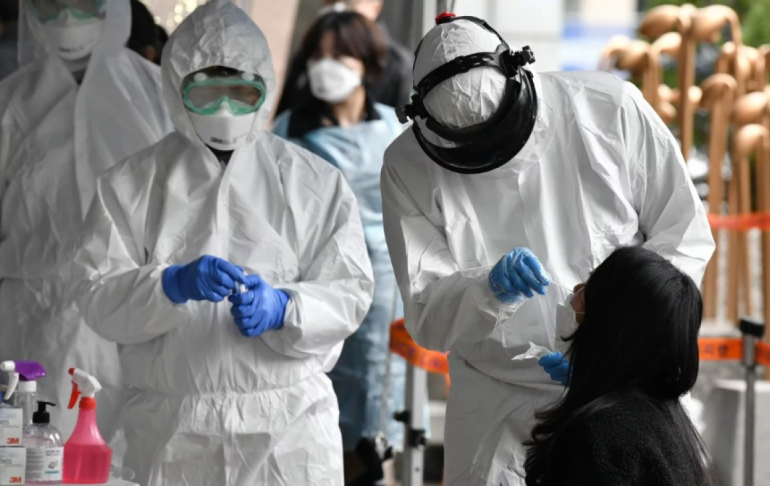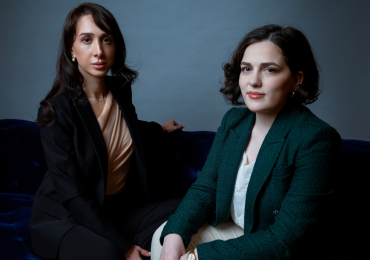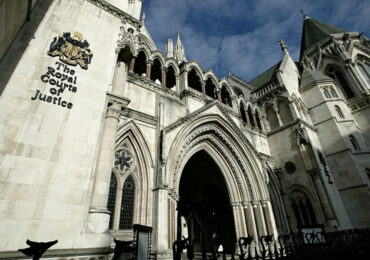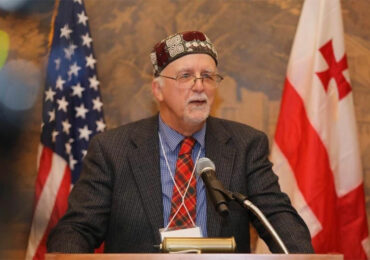South Korea has seen a steady decrease in new coronavirus cases for four consecutive days, despite being one of the worst-affected countries outside China, although global attention has shifted towards outbreaks in Italy and Iran.
South Korean President Moon Jae-in on Monday noted his country’s “slowing trend” of new infections but warned: “We should not be complacent at all.”
His point was underscored by the KCDC, which said that among the new patients were more than 60 people who were infected while working in close proximity to each other at an insurance company call centre.
“The total number of new confirmed cases is on a downturn but there are concerns over such mass infection cases”, said KCDC Deputy Director Kwon Jun-wook.
The steady decrease in cases has been attributed to a variety of factors, including mass testing, improved public communications and the use of technology. Extensive testing of members of the Shincheonji Church of Jesus, which was linked to more than 60 per cent of the country’s cases, has been completed.
South Korean officials have shared their experiences in containing the outbreak, saying that citywide lockdowns, as imposed by China in Wuhan, where the outbreak originated, are difficult to enforce in an open society.
China also introduced strict social distancing and extensive monitoring of citizens and ensured their adherence to preventive measures with punishment and rewards, resulting in a significant drop in the number of new cases.
“Without harming the principle of a transparent and open society, we recommend a response system that blends voluntary public participation with creative applications of advanced technology,” South Korea’s Vice Health Minister Kim Gang-lip told journalists.
Conventional and coercive measures such as lockdowns of affected areas have drawbacks, he said, undermining the spirit of democracy and alienating the public who should participate actively in preventive efforts.
“Public participation must be secured through openness and transparency,” he said.
South Korea has been proactive in providing its citizens with information needed to stay safe, including twice daily media briefings and emergency alerts sent by mobile phone to those living or working in districts where new cases have been confirmed.
Details about the travel histories of confirmed patients are also available on municipal websites, sometimes with breakdowns of a patient’s residence or employer, which can make them identifiable individually, leading to concerns about privacy.
The importance of maintaining good hygiene has also been stressed. South Koreans seldom leave their homes without wearing a face mask, with many buildings putting up signs reading “No Masks, No Entry”. Restaurant workers and retail staff wear masks while serving customers.
“I don’t like to wear a mask as I have to smell my own breath. I didn’t bother to wear as usual when I sneezed couple of times in the metro. Then other commuters frowned on me and stepped away from me. At that time, I decided to follow the trend and wear a mask,” said Min Gyeong-wook, a 35-year-old company employee.
South Korea has also come up with creative measures, including about 50 drive-through testing stations across the country, where it takes only 10 minutes to go through the whole procedure. Test results are available within hours.
Covid-19 tests are prohibitively expensive in many countries but in South Korea, all tests are free. The country is also capable of processing up to 15,000 diagnostic tests a day, and the aggregate number of tests has reached almost 200,000. This testing capability has enabled the country to identify patients early and minimise the harmful effects, health experts say. But this also led to South Korea having the second largest number of confirmed infections in the world after China, although this was superseded by Italy this week.
South Korea has established “special immigration procedures” to monitor arrivals for two weeks without having to ban inbound travellers from entering the country.
Those arriving from China, including Hong Kong and Macau but excluding Taiwan, have their body temperature checked, while their domestic contact information is verified and they are required to fill in a health questionnaire. They are also asked to download a self-diagnosis app on their mobile phones and put under intensive management if they show symptoms.
South Korea is also using its cutting-edge IT technology and its ubiquitous surveillance cameras to track infection sources, identifying the movements of confirmed cases based on their credit card transactions and mobile phone tracking, and disclosing this information to help trace those who may have come into contact with them.
Those who are at risk are placed in self-isolation and thoroughly managed on an individual basis by health authorities.
To cope with hospital bed shortages, the country has turned many job training centres and other public facilities into “living and treatment centres” where patients showing light symptoms of the coronavirus are placed in quarantine.
Professor Kim Woo-joo at Korea University College of Medicine said the country had gained experience from dealing with previous health emergencies, such as the 2009 H1N1 influenza pandemic, which resulted in about 750,000 cases and 180 deaths in South Korea, and the 2015 Middle East respiratory syndrome (Mers) outbreak, which infected 186 people and resulted in at least 39 deaths in the country.
“South Korea has learned valuable lessons from the outbreaks,” Kim said. “Public awareness of the need for individual hygiene such as washing hands and wearing masks has also been raised greatly, thanks to their experiences in the past outbreaks.”
The country has subsequently trained health workers to cope with pandemic outbreaks, especially testing for infections, tracking and isolating contacts.
“There are not many countries in the world like South Korea that have both brains and product facilities needed for coping with virus outbreaks,” said Hwang Seung-sik, a public health professor at Seoul National University.
Despite these facilities, Kim said it would be difficult for an open society such as South Korea or other OECD countries, to enforce lockdowns as seen in China.
This was highlighted when Hong Ik-pyo was forced to resign as the chief spokesman of the ruling Democratic Party after he came under fire over his remarks that Daegu City, the epicentre of the recent outbreak, should be locked down. The remarks came at a politically sensitive time, with parliamentary elections to be held on April 15.
Kim cautioned against premature optimism, noting that there have been small clusters of infections in some hospitals, apartments, churches and nursing homes in places other than Daegu, including Seoul and nearby Seongnam City.
Seoul’s Guro district on Monday said at least 46 people were infected at an insurance company call centre, where employees working in closed rooms are not allowed to wear masks so that they can speak clearly on the phone. Four more cases were family members of the employees, and 207 people who work on the same floor were being tested.
“The best scenario is the virus dies away in late March … The worst scenario is the virus spreads widely in metropolitan Seoul and its surrounding Gyeonggi Province,” Kim said. Almost half of South Korea’s 51 million citizens live in this area.
Kim Dong-hyun, president of the Korea Society of Epidemiology, said it is hard to prevent the Covid-19 illness from spreading among community members as viral sharing can occur during asymptomatic periods.
“Countries should take drastic preventive measures, even at the initial stage of the virus outbreak,” he said.
Source: scmp.com
"Forbes Georgia-ის სარედაქციო ბლოგპოსტების სერია "როგორ გამდიდრდა“ და "საქართველო რეიტინგებში".















